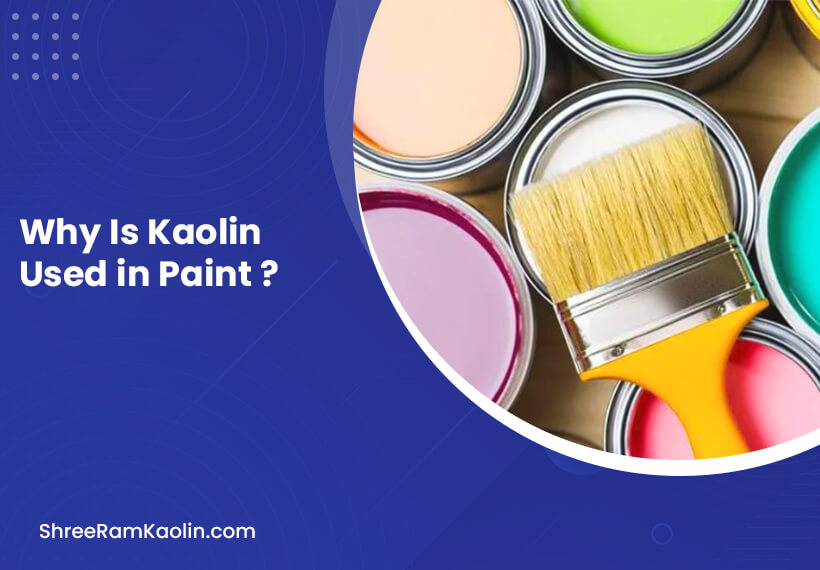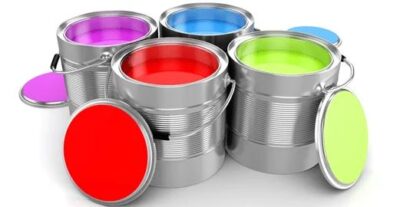Why Is Kaolin Used in Paint?

Paint is more than just a decorative finish—it’s about creating long-lasting, durable, and beautiful surfaces. But have you ever wondered what makes paint so smooth, opaque, and easy to apply? The secret lies in one often-overlooked ingredient: kaolin. This natural mineral, also known as china clay, plays a crucial role in the paint industry. From enhancing texture to improving opacity and durability, kaolin is a versatile and cost-effective component in paint formulations.
In this article, we’ll explore why kaolin is so widely used in paint and how it contributes to the high-quality products we rely on every day.
Understanding Kaolin Clay
What is Kaolin Clay?
Kaolin (commonly referred to as China clay) has long been used as a white pigment due to the weathering process that forms its main constituent mineral: Kaolinite. Think of kaolin like nature’s own white paintbrush; its applications go far beyond mere pigment production!
Historical Use of Kaolin
Kaolin first found popularity as pottery and ceramic material centuries before becoming an essential paint industry ingredient. Ancient civilizations – particularly China (hence its nickname of China Clay) – recognized kaolin’s unique properties; today it remains an indispensable industrial mineral with applications across numerous fields of endeavor.
The Role of Kaolin in Paint Manufacturing
Chemical Properties
Kaolin’s chemical structure makes it the ideal material to incorporate into paint applications. Its aluminum silicate composition provides stability and resistance against chemical reactions, helping your paint retain its properties over time – like having its own shield built right into its formulation!
Physical Properties
The physical characteristics of kaolin are equally impressive. Its plate-like particle structure creates excellent coverage and flow properties in paint. Imagine thousands of tiny, flat plates arranging themselves to create a smooth, even surface – that’s kaolin at work in your paint.
Key Benefits of Kaolin in Paint

Enhanced Opacity
One of kaolin’s superstar qualities is its ability to improve paint opacity. The flat particles align parallel to the substrate surface, creating multiple layers that effectively hide what’s underneath. It’s like laying down millions of tiny mirrors that reflect light and create a perfect, uniform finish.
Improved Durability
Kaolin is the ultimate paint durability enhancer. It helps increase scratch resistance, decrease cracking and enhance weatherability – almost like adding armored panels for protection!
Cost-Effectiveness
Kaolin stands out among paint additives as a unique value proposition, being readily available, relatively cost-efficient to process, and offering numerous benefits all-in-one package – making it a smart cost-cutting decision for manufacturers as well as consumers alike.
Types of Kaolin Used in Paint
Calcined Kaolin
Kaolin that has been heated at high temperatures can alter its structure and enhance certain properties, creating something similar to weight lifting for its surface imperfections. When heated properly, these types of kaolin become stronger.
Hydrous Kaolin
The natural, unheated form of kaolin brings its own set of benefits to paint formulations. It’s particularly good at improving the paint’s workability and application properties.
Paint Applications
Interior Paints
In interior paints, kaolin helps create that perfect matte finish we all love. It’s particularly effective in premium wall paints where coverage and aesthetics are paramount.
Exterior Paints
Outside, kaolin really shows its strength. It helps paints stand up to weather, UV radiation, and temperature changes, making it an essential component in exterior paint formulations.
Industrial Coatings
In industrial applications, kaolin’s durability and chemical resistance make it invaluable for creating tough, long-lasting protective coatings.
Environmental Impact
Sustainability Aspects
Kaolin is a natural mineral, and its production generally has a lower environmental impact compared to synthetic alternatives. However, responsible sourcing remains crucial.
Mining Considerations
The mining of kaolin requires careful environmental management. Modern practices focus on minimizing impact and implementing effective land reclamation strategies.
Frequently Asked Questions
Is kaolin paint safe for indoor use?
Yes, kaolin is a natural mineral and is considered safe for indoor paint applications. It’s non-toxic and has been used in various products for centuries.
Does kaolin make paint more expensive?
No, actually kaolin helps make paint more cost-effective while improving its quality. It’s relatively inexpensive compared to other paint additives.
Can kaolin paint be used on all surfaces?
While kaolin-containing paints are versatile, the specific paint formulation should match the intended surface. Always check the manufacturer’s recommendations.
How does kaolin affect paint color?
Kaolin is naturally white and helps improve color consistency and opacity in paint, making colors appear more uniform and true.
Does kaolin make paint more environmentally friendly?
As a natural mineral, kaolin is generally more environmentally friendly than synthetic alternatives, though the overall environmental impact depends on the complete paint formulation.
Conclusion
Kaolin plays an invaluable role in paint manufacturing; it not only acts as an ingredient but is an indispensable mineral that enhances opacity and durability while being cost-effective and high quality formulations. Even as paint technology evolves, kaolin remains one of the mainstays in its formulation process – showing us again how nature provides us with effective manufacturing solutions!

